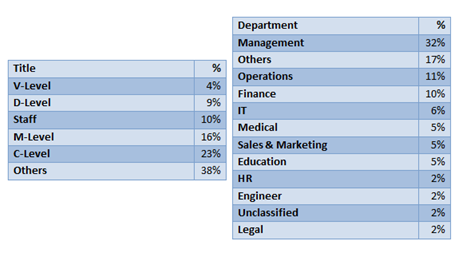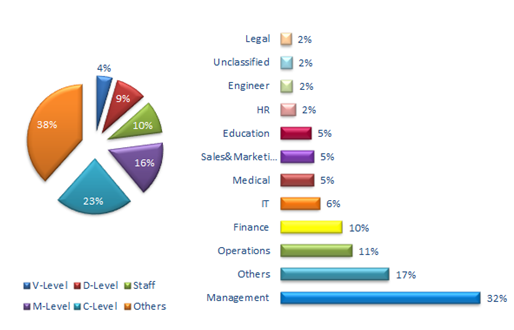
Let Your Data Come To Life – Data Visualization
Author: Bryan
Data comes in various avatars, in the form of customer data, website activities, results from campaigns and lead generation. As B2B marketers, we have more than enough information to make marketing decisions. Yet, how many actually use all the data available?
To get a pulse of your customers and the market, interpretation and analysis is pivotal in transforming data into information. But isn’t it boring to delve into a spreadsheet? Wouldn’t a graph or chart speak louder than words and numbers?
We mentally process visuals 60,000 times faster than text. Visual representation of each data point definitely has a better impact. For instance, if we want to give a sneak peek into your database what will resonate to you better? This?
Change How You Look at Data
To make data meaningful, you need to become detectives to discover patterns, build correlations, detect trends and identify opportunities. Here’s how data visualization helps:
· Makes interpretation easier – It is much easier to interpret data represented as a visual than in text or tables. A graph, chart or pictograph allows the reader to analyze results more efficiently.
· Get to know what your data is missing – When data is displayed visually, you can easily identify missing links. A better flow or connect is provided to help you find out how to fill in the gaps to build your story.
· Better decision making – Visuals give you a snapshot of your data, helping you derive insights easily and make better decisions.
Use Data Visualization Techniques to Attract not Convert
There are different types of data visualization techniques and tools such as graphs, charts, infographics, word clouds, heat maps and pie charts. Data visualization should be used with the objective of attracting your reader’s attention, converting them to customers is the next step.
Tips to use data visualization to your advantage:
· Dissect and get into the skin of your data. Understand what you have, the size, type and coordinates.
· Identify what type of outcome you want and what kind of information is needed to visualize it.
· Understand your audience and observe how they process visual information.
· Use simple forms of data visualization tools, so that your audience can interpret it is an easier way.
As organizations are becoming more data-driven, it is imperative that data -the core business asset, be utilized effectively. Data visualization helps in providing you an overview of your market and customers, making interpretation and business decision making easier. Let your data come to life.
About Author
Vice President, Sales has a 20 year track record in B2B marketing and sales. With expertise in B2B Email Appending, Enhancement and Validation made accessible to more than 3000 clients worldwide. An avid traveler, takes keen interest in exploring brand development strategies and unchartered techniques for marketing solutions.






